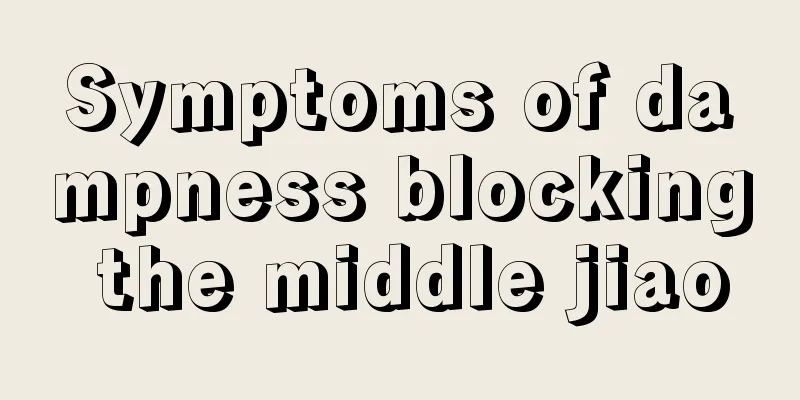What is the intervention after hearing loss is diagnosed?

|
Every part of the human body needs to be well protected, especially the eyes, ears, and limbs. Damage to these parts can easily cause some effects on the body. The protection of the ears is mainly hearing. If the hearing is impaired, it will be difficult to contact the outside world. So what is the intervention after the hearing loss is confirmed? Many people don’t know much about it. There are many aspects of intervention after hearing loss is confirmed, but the main thing is that hearing loss occurs more frequently, especially in newborns. Therefore, parents need to have a good understanding of this issue. Intervention after hearing loss diagnosis: 1. Medical intervention Medical intervention is when a physician makes a medical diagnosis, i.e. the cause, extent, and location of hearing loss, and uses treatment to restore hearing. Earwax in the external auditory canal: In newborns and infants, there is too much earwax and it is difficult to be discharged naturally, which may block the external auditory canal. In this case, the use of otoacoustic emission testing can often cause the otoacoustic emission energy to disappear, and may also affect the acoustic impedance test, so the external auditory canal cerumen must be cleared. Acute secretory otitis media: Acute secretory otitis media in infancy and childhood is often caused by upper respiratory tract infection and immune allergy. It can cause tympanic effusion and hearing loss. It can be diagnosed based on clinical symptoms, ear microscopic examination, and audiological examination, including otoacoustic emissions and acoustic impedance examination. Etiological treatment can be used, steroid hormones and anti-allergic drugs can be used, and ephedrine can be dropped into the nasal cavity. If drug treatment is ineffective, transtympanic membrane puncture and drainage, incision and drainage, and transtympanic membrane ventilation tube installation can be used. To improve and restore the hearing of children. Congenital malformations of the external and middle ear: Different surgical treatments are used depending on the classification of the malformation, on the one hand, external ear plastic surgery and auricle reconstruction, and on the other hand, hearing improvement. For bilateral auricle and external auditory canal deformities, hearing aids should be selected as early as possible to promote speech and language development. 2. Hearing compensation or reconstruction Hearing compensation or reconstruction mainly includes hearing aid fitting and cochlear implantation. Hearing aid selection: Children with permanent sensorineural hearing loss should be fitted with hearing aids. The degree of hearing impairment is generally moderate to severe. Some experts even advocate that even children with mild hearing impairment should be fitted with hearing aids for hearing correction. People with unilateral hearing loss can also be fitted with hearing aids. Bilateral hearing loss should be matched with bilateral hearing aids. The advantages of binaural matching are that it helps to distinguish the sound source, improve the ability to direct the sound source, has a good integration effect, and increases the loudness of the sound. Cochlear implant: A cochlear implant is a transducer that simulates the function of the human cochlea. It converts sound signals into electrical signals through a speech processor, transmits them to the electrodes in the inner ear, directly excites the auditory nerve, and thus produces hearing. The cochlear implant device is mainly divided into two parts: the implant part (including the receiving device and multiple electrodes) and the external part (including headphones, transmitters, speech processors, etc.). For children with bilateral severe or profound sensorineural hearing impairment who have no obvious effect after using hearing aids for 3-6 months, a cochlear implant preoperative evaluation should be performed at around 10 months of age, and it is recommended that cochlear implant surgery be performed as soon as possible. 3. Auditory function training and speech-language rehabilitation training After the child has been fitted with a hearing aid and has had his or her hearing corrected by a cochlear implant, he or she needs to undergo auditory function training and speech-language rehabilitation training. Physicians, audiologists, speech-language therapists, special educators, and psychologists need to be involved. It is important to build a long-term relationship with the child to support the child's hearing and language development so that the child can hear sounds and understand speech. The contents of auditory function training include: auditory perception; auditory attention; auditory localization; auditory recognition; auditory memory; auditory selection; auditory feedback. Speech-language rehabilitation training : The speech training program includes phoneme, syllable, word, and short sentence training. The following points should be followed for speech rehabilitation: 1. If conditions permit, it is best to undergo systematic training in a rehabilitation center; 2. Stimulate the language interest of deaf children; 3. Progress step by step, from phonemes to short sentences, and repeat the process; 4. Grasp the verbal behavior link and arrange the content of the dialogue. Speech-language rehabilitation training was evaluated by speech recognition rate and language expression rate. Through the above introduction, we have a good understanding of the intervention after the diagnosis of hearing loss, and when such a problem occurs, timely treatment should be carried out. At the same time, during the treatment process, we must also pay attention to the changes in the child and any abnormalities. We must conduct physical examinations in time to prevent such problems from becoming more serious. |
<<: What should I pay attention to after hernia surgery?
>>: The important role of zinc supplementation, expectant mothers should pay attention to it
Recommend
What fruits are good to eat during ovulation
We all know that fruits contain relatively more t...
Grape seed taking method and dosage
It has to be said that grape seeds are a health p...
How to choose the incision for lung cancer surgery? Many factors need to be considered
When choosing an incision for lung cancer surgery...
Why do beans become smelly after being soaked for a long time
Many people soak beans in daily life, because soa...
Hot and cold compress for bloodshot eyes
Mobile phones and computers are very common in ou...
What is the function of the walnut kernel skin?
Walnuts are a very popular brain-boosting food. S...
What to do if white clothes turn yellow after being soaked
Although white clothes look good and are easy to ...
What does open wound mean?
An open wound is a wound that bleeds outward, whi...
How to make your wrist thicker
A popular term nowadays is boyfriend arms, which ...
What is stomach flu
Cold is perhaps the most common disease in our li...
What is the cause of pelvic pain
The pelvis is the area of the body located at t...
Tips on how to remove oil stains from clothes
If clothes are stained with oil, they can be easi...
How to quickly treat osteosarcoma
Many people would like to know how to quickly tre...
What is the reason for coffee-colored mucus in stool
Stool is the normal excretion of the human body, ...
What are the symptoms of chronic colorectalitis
Chronic colitis and proctitis are relatively comm...









